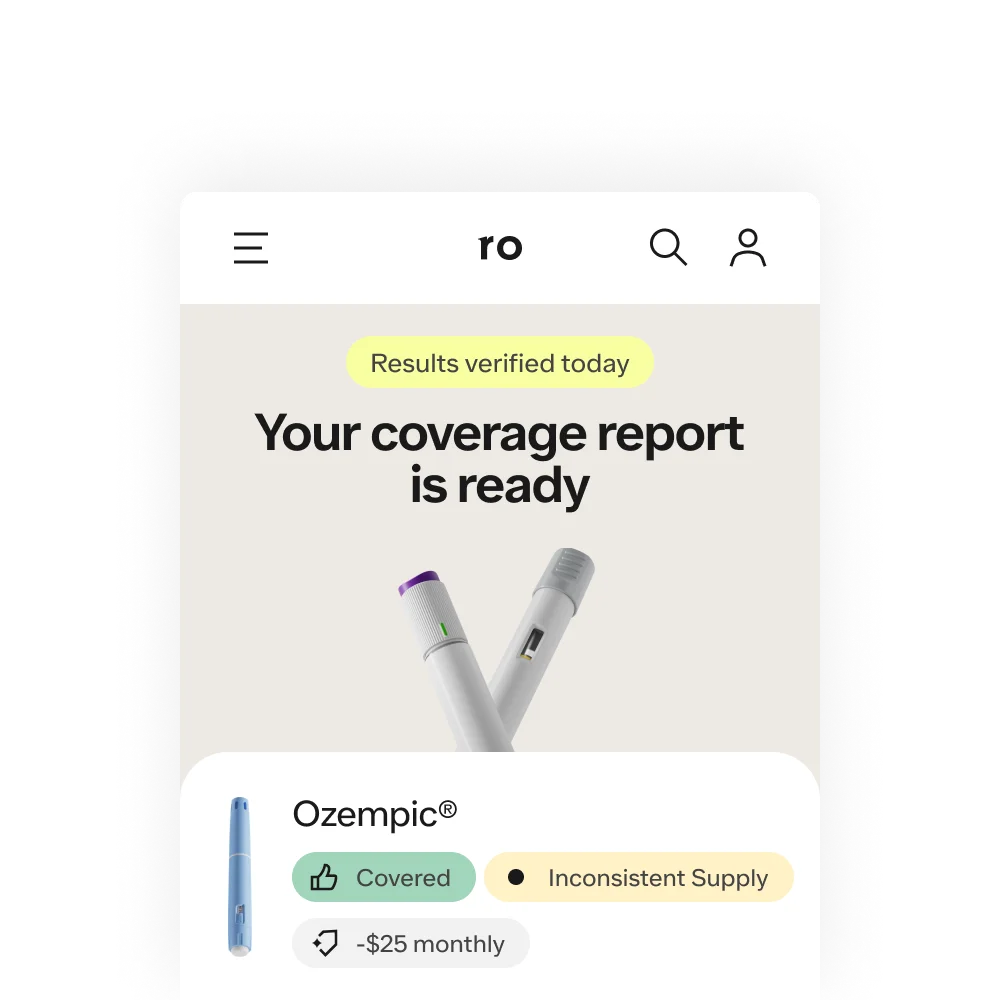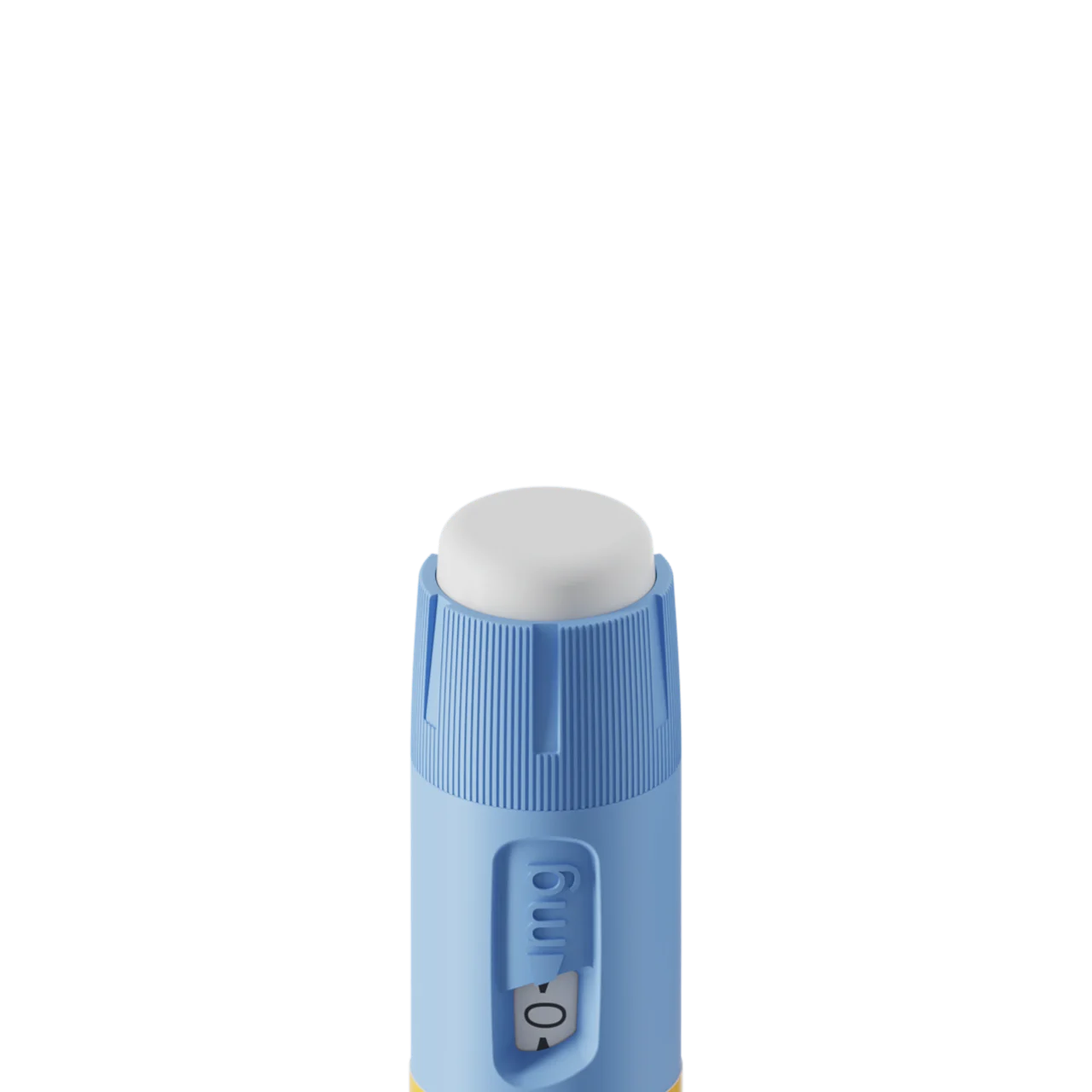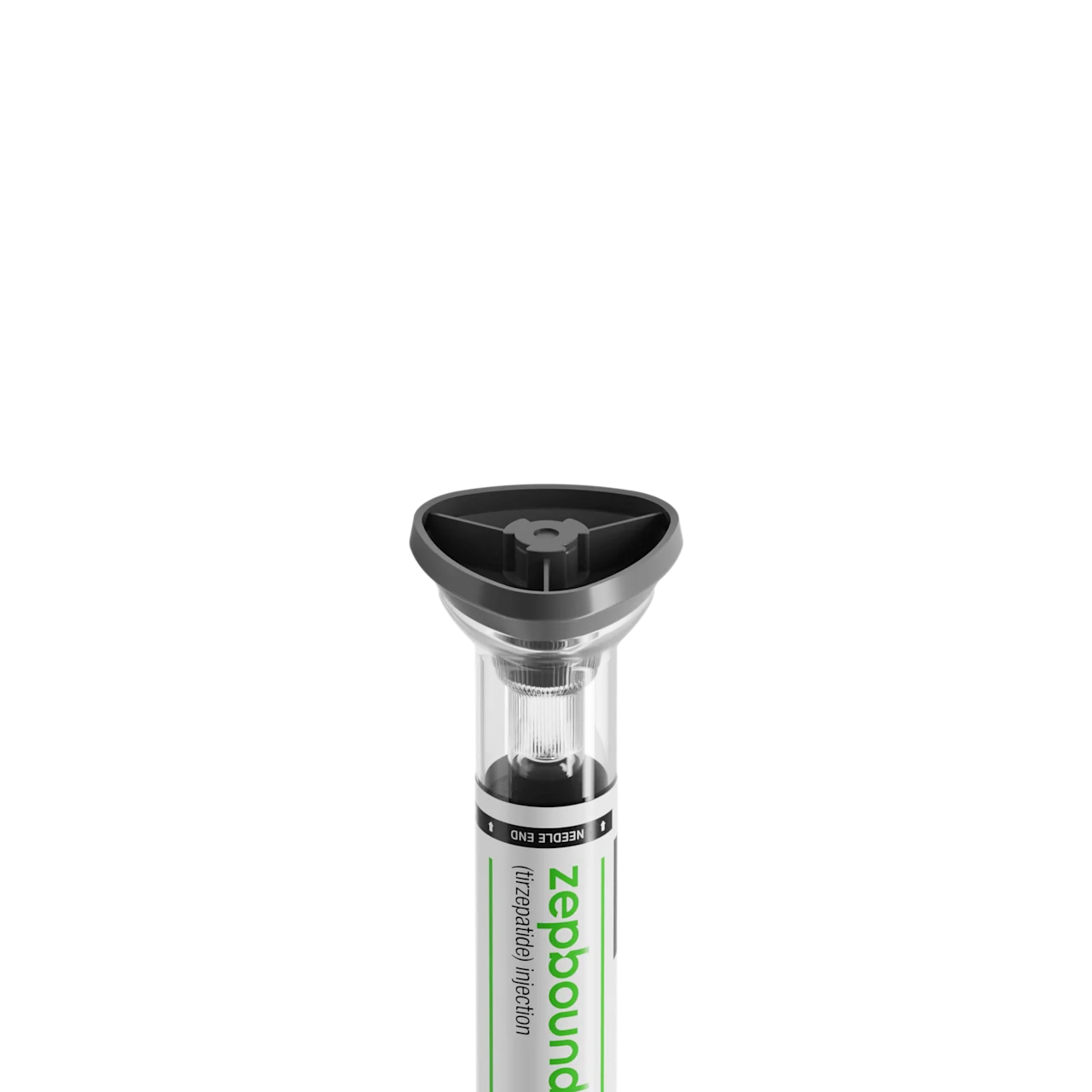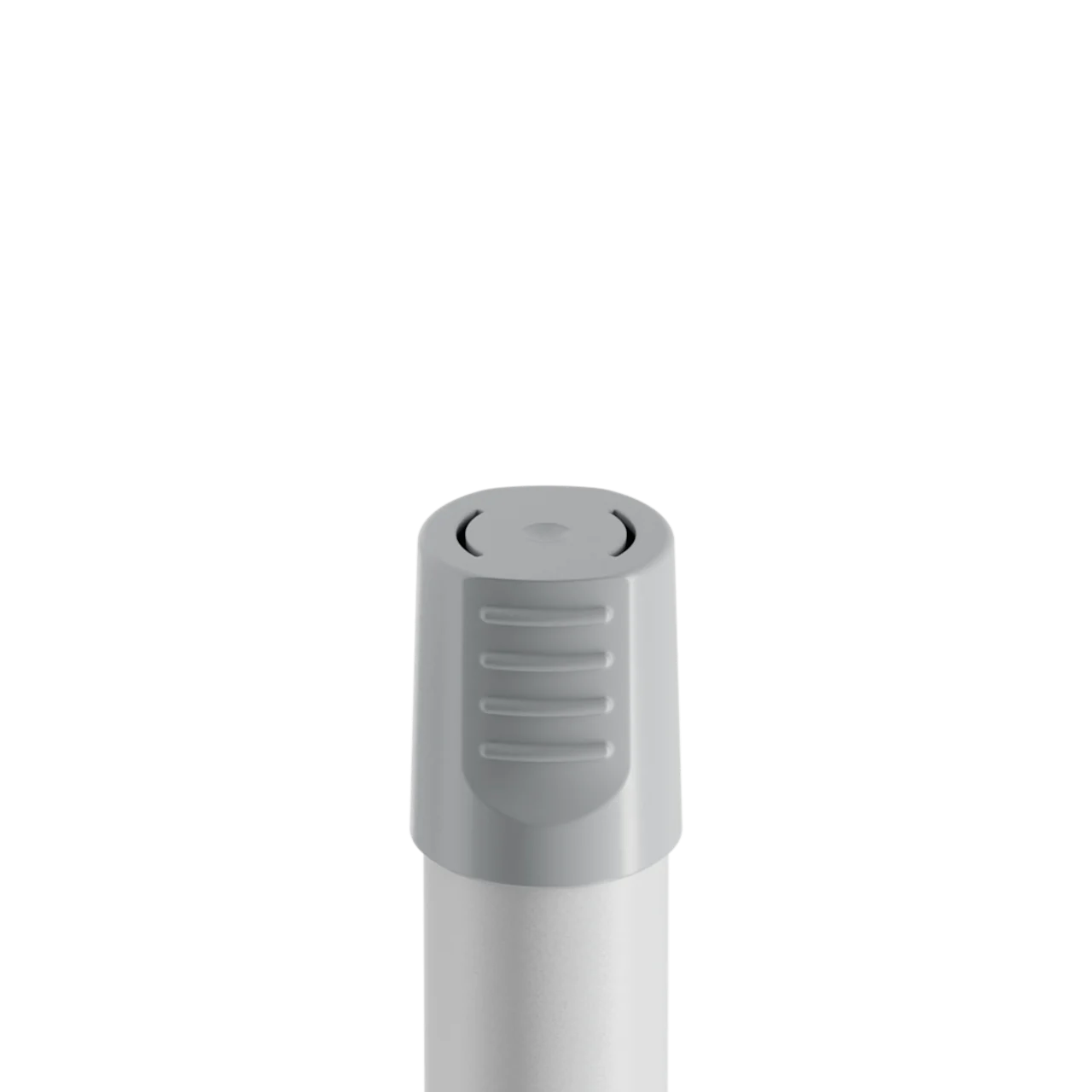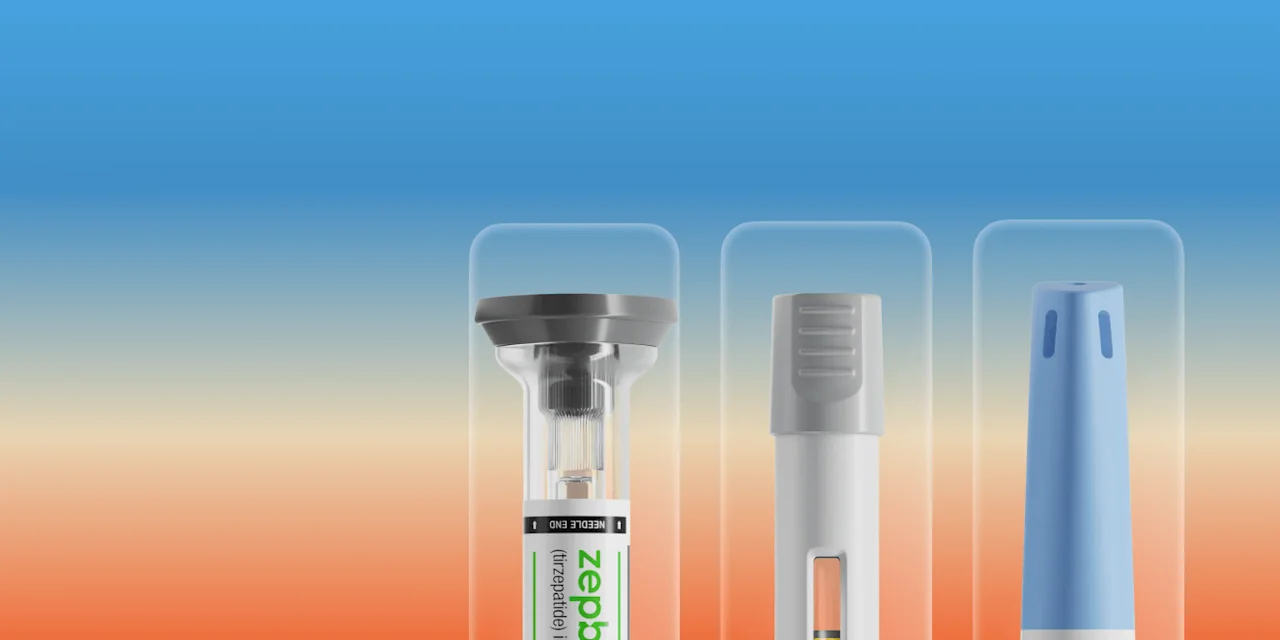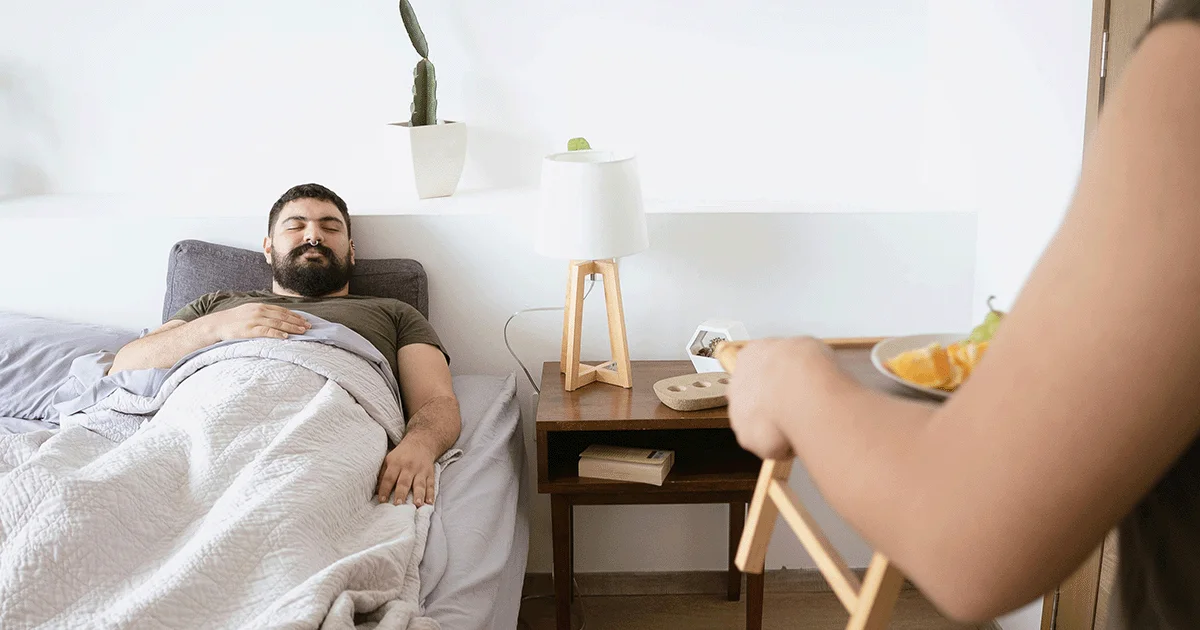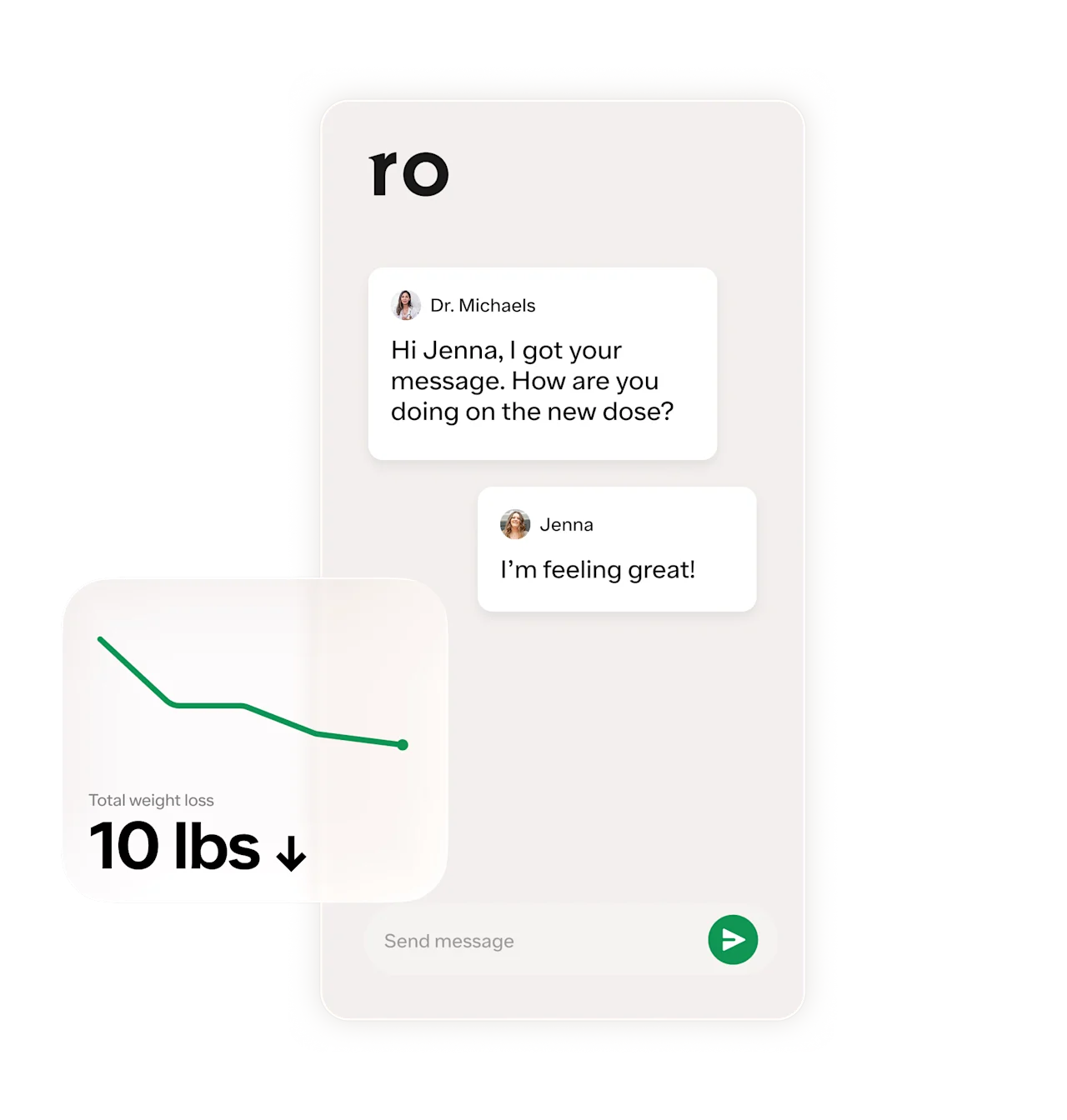Key takeaways
Nausea is one of the most common side effects of Wegovy, especially during the first few months and when the dose is increased.
Staying hydrated, eating smaller meals, and avoiding trigger foods can help relieve nausea and other digestive side effects, such as bloating, indigestion, and abdominal discomfort.
If nausea becomes persistent or severe, talk to your healthcare provider about adjusting your dosage or trying a different medication.
Here's what we'll cover
Key takeaways
Nausea is one of the most common side effects of Wegovy, especially during the first few months and when the dose is increased.
Staying hydrated, eating smaller meals, and avoiding trigger foods can help relieve nausea and other digestive side effects, such as bloating, indigestion, and abdominal discomfort.
If nausea becomes persistent or severe, talk to your healthcare provider about adjusting your dosage or trying a different medication.
Feeling sick on Wegovy, especially at the beginning of treatment, can be a common experience. Just take it from research: Nearly half (44%) of people reported nausea in clinical trials of the highest dosage of the drug. While the queasiness tends to be at its worst during the first 4–5 weeks, it can continue for months. So, how do you stop feeling sick on Wegovy until then? Follow these tips:
Stay hydrated
Stop eating once you feel full
Eat smaller meals, more frequently
Stay away from triggering foods and drinks
Avoid lying down after you eat
Try ginger or mint
Check in with your healthcare provider
Below, we’ll break down each of these tactics and share why they can be so effective at relieving an upset stomach on Wegovy.
How do you stop feeling sick on Wegovy?
For many people, nausea is a common side effect of Wegovy, along with other gastrointestinal issues like diarrhea, vomiting, and constipation. While you can’t necessarily prevent yourself from feeling sick on Wegovy, there are steps you can take to minimize your discomfort and feel relief.
Rx weight loss with Ro
Get access to prescription weight loss medication online
1. Stay hydrated
Staying hydrated is one of the top tactics for avoiding nausea, diarrhea, and other common GI side effects of Wegovy. However, because the drug makes you feel fuller, people often end up drinking less than they did before starting treatment, making them even more at risk of feeling queasy on Wegovy.
To avoid feeling sick on Wegovy, make sure you are drinking 8–10 cups of clear, sugar-free liquids every day. Now, that may be easier said than done. So, here are a few helpful tips to make sure you’re getting enough fluids on Wegovy:
Aim for cold water or other flat, clear, sugar-free beverages (carbonation can worsen nausea)
Spruce up your glass of H20 with lemon or fruit slices
Sneak in additional hydration through water-rich foods, such as soups, yogurt, popsicles, gelatin (Jell-O)
Replenish your electrolytes after vomiting. Consider trying unsweetened coconut water in moderation.
Sip, don’t guzzle
While all of the above strategies can be effective, the last nugget of wisdom is especially worth noting. Since Wegovy slows down digestion, you don’t want to overload your system with huge gulps of water; this can make you feel even fuller and, in turn, more nauseated. So, instead, drink in small sips. For the same reasons, you also want to avoid drinking too much of any beverage during a meal. Instead, try slowly sipping on some water 30–60 minutes before or after you eat.
2. Stop eating once you feel full
When you start taking Wegovy, you’ll probably notice that you have fewer cravings, get full sooner, and feel more in control over your eating — all welcome changes that can lead to weight loss. But this process can be gradual, taking place over a period of weeks to months as you gradually increase your dosage of the medication.
In essence, Wegovy helps you tune in to your body’s hunger and fullness cues and even reduce appetite over time. Before the full effects of the drug kick in, however, you may keep eating the same amount as you did before — even though your stomach now gets physically full much sooner, thanks to the drug’s digestive-slowing properties. This can result in that uncomfortable, too-full feeling that can lead to or worsen nausea.
So, to avoid feeling sick on Wegovy, pay attention to how you feel during a meal. You may be used to clearing your plate, but you may not be able to do so any longer — and that’s okay. So, try to stop eating once you feel full and save whatever deliciousness remains as leftovers.
To help you better recognize your body’s fullness signals, try eating mindfully. Avoid doing other activities while you eat, such as reading or watching TV, and focus on the meal in front of you, enjoying how it tastes and feels while you chew slowly and savor each bite. Research shows that mindful eating can not only help people consume less during a meal but also increase their satisfaction.
3. Eat smaller meals, more frequently
Because Wegovy slows down digestion, it takes longer for food to exit your stomach and enter the small intestine. This means you may very well feel like you just licked your plate clean even when you still have plenty of forkfuls to go. But here’s the thing: Even if there is more on your plate, eating past the state of fullness can cause or exacerbate nausea.
To avoid that, you can eat smaller meals more often during the day, as opposed to larger meals less often. If you used to eat three main meals per day, try splitting them up into 6–8 smaller ones, and see if that offers you some relief.
4. Stay away from triggering foods and drinks
While no food is officially off limits when taking Wegovy, there are some bites and beverages you may want to avoid during treatment — and this is especially true if you’re dealing with digestive woes or want to prevent them from occurring in the first place. Of course, this is just a blanket list, and results may vary based on the individual.
There are a number of foods that can trigger nausea and an overall feeling of yuck on Wegovy, including:
Foods high in saturated fats (e.g. fatty meats, full-fat dairy products)
Sugary foods and beverages (e.g. candies, sodas)
High-sodium foods (e.g. canned soups, cold cuts)
Greasy, fried, and processed foods (e.g. french fries, potato chips)
Caffeine
Alcohol
Carbonated beverages
Items with a lot of spice or strong odors can also trigger nausea. While not food-related, loud noises can worsen nausea, too. So, you might want to eat at your desk or in a quiet place instead of the break room if Susan often brings a tuna salad sandwich for lunch and Bob speaks at an octave that rivals a fire alarm.
As for what to eat? Take it easy on your queasy stomach with bland foods like:
Crackers
Toast
English muffins
Baked chicken or fish
Potatoes
Noodles
Rice
Soup
Apples
Be sure to check in with your healthcare provider if your diet feels too limited to ensure you are still getting the proper types and amounts of required nutrients.
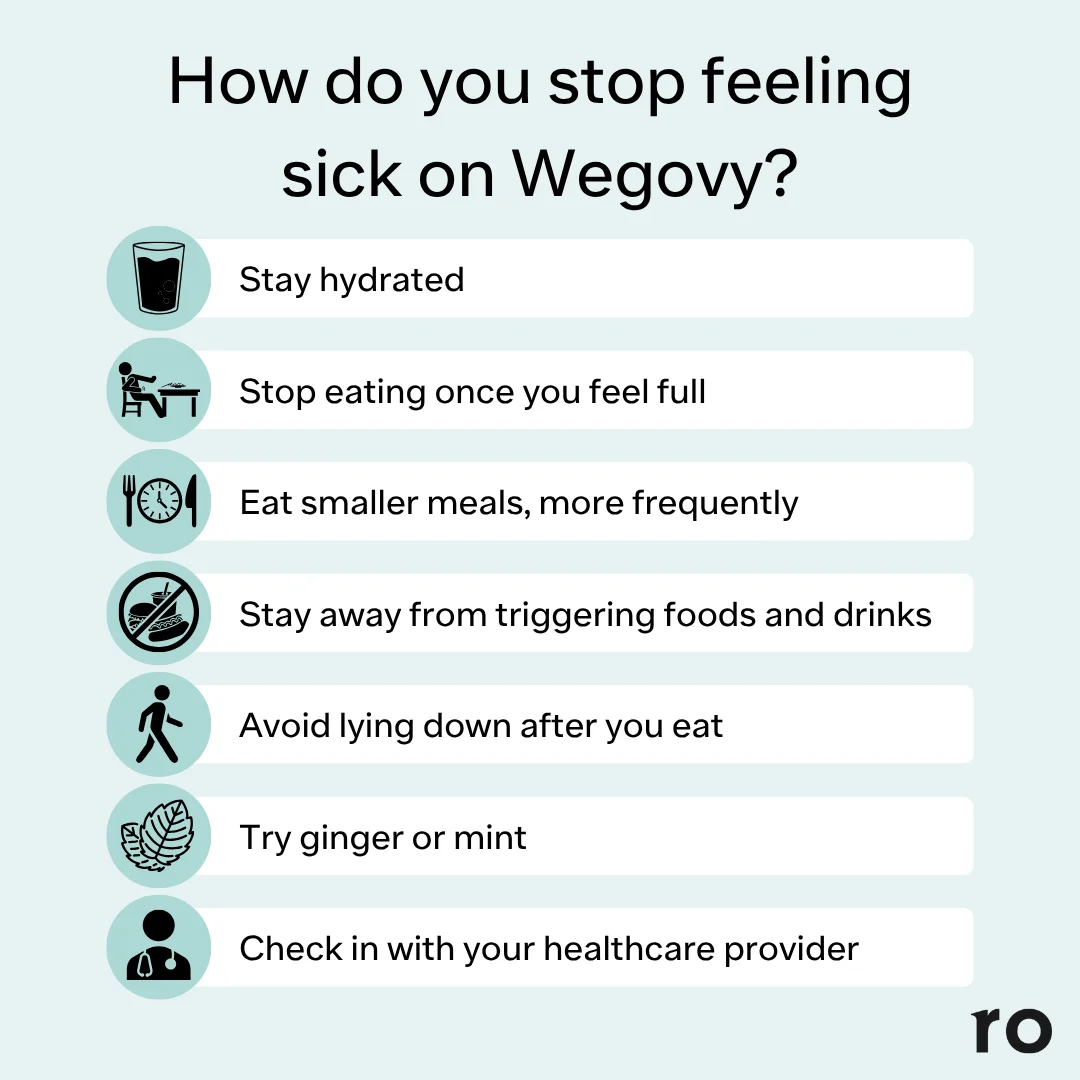
5. Try ginger or mint
When it comes to relieving nausea, there are two superfoods you should know about: ginger and mint. If you consume them on the day you inject Wegovy, make sure to eat them at least 30 minutes after your injection for the best effects.
Ginger is one of the most popular herbal remedies for nausea and can be found as a whole food and in ginger chews and teas. For persistent nausea, however, you might want to consider a ginger supplement from a reliable source (available as a capsule, powder, or liquid extract) — just check with your healthcare provider first to make sure your symptoms aren’t a sign of something else. Studies have found that taking 1,500 mg of ginger per day, divided into doses (e.g. two or three times per day), can be an effective dosage for nausea relief. Keep in mind that if you are using processed formulations to be sure you are obtaining them from reliable sources, since supplements are not regulated by the US Food and Drug Administration (FDA).
Another anti-nausea strategy is to incorporate mint into your routine, such as by adding some mint leaves to your salad or glass of water. You can also enjoy nausea relief through mint aromatherapy, according to studies of nausea and vomiting during pregnancy and after surgery. That said, be careful of adding mint to your routine if you experience significant acid reflux, as mint could worsen those symptoms. And if you give either ginger or mint a try and find it is not working out for you, discontinue them. What’s most important is for you to feel as good as possible.
6. Avoid lying down after you eat
When you’re nauseated, you may feel like simply lying down on the couch or even your bed (any comfy surface will do!) will make it all better. But try to avoid the temptation to go horizontal, especially if you just ate, as doing so can worsen your symptoms. Instead, stay upright and sit quietly until you feel better.
You can also go for a light (keyword!) stroll, ideally in fresh air. A short 10–15 minute walk after a meal may help relieve other gastrointestinal side effects of Wegovy, such as bloating, belching, flatulence, and stomach pain.
7. Check in with your healthcare provider
Despite your best efforts, your digestive distress — be it nausea, abdominal pain, or another symptom — just won’t go away? Then, it’s high time to contact your healthcare provider.
If you’re still ramping up to your maintenance dosage of Wegovy, your provider can take that process more slowly or even take you back down to a lower dosage before trying a higher one again later on. They can also recommend anti-nausea medications such as Motilium (domperidone) to help ease your symptoms.
Depending on your tolerance for Wegovy, your healthcare provider may recommend switching to another GLP-1 medication for weight loss, such as Zepbound (tirzepatide) or Saxenda (liraglutide). While other drugs in this class are also known to cause gastrointestinal side effects, such as nausea, your body may react differently to each one. So, attempting a different medication might be worth a try.
How long does nausea last on Wegovy?
If you’ve read any reviews of Wegovy, you’re probably aware that nausea is a common side effect. In particular, research suggests that nausea is most common during the first 4–5 weeks, but can remain frequent all the way through week 20 (the start of month 5), at which point it gradually goes away on its own.
Week 20, or the start of month 5, is right about the time that you may reach the highest dosage of Wegovy, if you follow a standard dosing schedule. While there is no fixed duration of episodes of nausea, some experience longer-lasting episodes, even more than eight days at a time. Keep in mind, your experience could vary and could depend on factors unique to your own body.
If your nausea is persistent or severe, contact your healthcare provider. If it’s accompanied by other symptoms such as severe stomach pain or vomiting that makes it hard to keep food down, seek emergency medical attention
Other common side effects of Wegovy
While nausea is by far the most common side effect of Wegovy, it’s not the only one. Here is a more comprehensive list:
Diarrhea
Vomiting
Constipation
Abdominal pain
Headache
Upset stomach or indigestion
Dizziness
Bloating
Hypoglycemia (low blood sugar) in people with type 2 diabetes
Flatulence
Stomach flu
Common cold
You may not experience all of these side effects, but they were all reported by at least 5% of people in clinical trials. The good news is that most of them — especially the digestive side effects like nausea, diarrhea, and vomiting — tend to go away on their own with time as your body adjusts to the medication.
In the meantime, follow these three tips to feel less sick while taking Wegovy:
Stay hydrated. Staying hydrated can help relieve nausea as well as vomiting, constipation, diarrhea, belching, and flatulence. Take care to drink in small sips and avoid using a straw. Steer clear of soft drinks and carbonated beverages, which can worsen GI symptoms, and opt for water or decaffeinated tea instead.
Stay active. Regular exercise is recommended when taking Wegovy. Doing anything vigorous may not be the best idea when you’re feeling sick on Wegovy, but light exercise — such as a short walk after a meal — can help relieve nausea and gassiness. If you’re dealing with a lot of constipation, increasing your physical activity can help get things moving.
Watch your fiber intake. High-fiber foods can be great for weight loss since they boost feelings of fullness. But depending on your symptoms, you may want to eat more — or less — of the nutrient. Fibrous foods like whole grains, nuts, and veggies can lead to more diarrhea, bloating, and flatulence. If you’re experiencing constipation, on the other hand, they can help clear things up.
Bottom line
Wegovy can produce impressive weight loss results — and, in a much less positive sense, impressive side effects. Nausea is the most commonly reported symptom among people taking the drug, but it often starts to go away after you’ve reached your maintenance dosage of Wegovy, if not sooner. Until you reach that point, there are ways to stop feeling sick on Wegovy.
Stay hydrated. Sip water and clear liquids throughout the day — ideally between meals but not during them — to ease symptoms like nausea, diarrhea, and constipation.
Eat smaller meals, more often. Because Wegovy slows digestion, eating smaller portions spaced out during the day can help prevent that too-full, sick feeling. Once you start to feel full, stop eating.
Avoid foods and drinks that trigger nausea. Steer clear of greasy, spicy, and highly processed foods as well as carbonated drinks, caffeine, and alcohol, especially if they make your nausea worse. You could also keep a food and nausea diary to see what types of foods you eat before feeling nauseated.
Try ginger or mint. Both are known to help relieve nausea and can easily be incorporated into your routine, be it as a food, in a beverage, or even as aromatherapy. Remember that sometimes mint can worsen acid reflux symptoms, so incorporate it into your routine with caution.
Talk to your healthcare provider. If your symptoms won’t go away, consult your healthcare provider; they can adjust your dose, prescribe anti-nausea medication while you get used to Wegovy, or recommend another GLP-1 if needed.
DISCLAIMER
If you have any medical questions or concerns, please talk to your healthcare provider. The articles on Health Guide are underpinned by peer-reviewed research and information drawn from medical societies and governmental agencies. However, they are not a substitute for professional medical advice, diagnosis, or treatment.
Wegovy Important Safety Information: Read more about serious warnings and safety info.
GLP-1 Important Safety Information: Read more about serious warnings and safety info.
Zepbound Important Safety Information: Read more about serious warnings and safety info.
Saxenda Important Safety Information: Read more about serious warnings and safety info.
References
Amzajerdi, A., Keshavarz, M., Montazeri, A., et al. (2019). Effect of mint aroma on nausea, vomiting and anxiety in pregnant women. Journal of Family Medicine and Primary Care, 8(8), 2597–2601. doi: 10.4103/jfmpc.jfmpc_480_19. Retrieved from https://pmc.ncbi.nlm.nih.gov/articles/PMC6753788/
Anh, N. H., Kim, S. J., Long, N. P., et al. (2020). Ginger on Human Health: A Comprehensive Systematic review of 109 randomized controlled trials. Nutrients, 12(1), 157. doi: 10.3390/nu12010157. Retrieved from https://pmc.ncbi.nlm.nih.gov/articles/PMC7019938/
Bodagh, M. N., Maleki, I., & Hekmatdoost, A. (2018). Ginger in gastrointestinal disorders: A systematic review of clinical trials. Food Science & Nutrition, 7(1), 96–108. doi: 10.1002/fsn3.807. Retrieved from https://pmc.ncbi.nlm.nih.gov/articles/PMC6341159/
Friedrichsen, M., Breitschaft, A., Tadayon, S., et al. (2021). The effect of semaglutide 2.4 mg once weekly on energy intake, appetite, control of eating, and gastric emptying in adults with obesity. Diabetes, Obesity & Metabolism, 23(3), 754–762. doi: 10.1111/dom.14280. Retrieved from https://pmc.ncbi.nlm.nih.gov/articles/PMC7898914/
Gorgojo-Martínez, J. J., Mezquita-Raya, P., Carretero-Gómez, J., et al. (2022). Clinical Recommendations to Manage Gastrointestinal Adverse Events in Patients Treated with Glp-1 Receptor Agonists: A Multidisciplinary Expert Consensus. Journal of Clinical Medicine, 12(1), 145. doi: 10.3390/jcm12010145. Retrieved from https://pmc.ncbi.nlm.nih.gov/articles/PMC9821052/
Hayes, M. R., Borner, T., & De Jonghe, B. C. (2021). The role of GIP in the regulation of GLP-1 satiety and nausea. Diabetes, 70(9), 1956–1961. doi: 10.2337/dbi21-0004. Retrieved from https://pmc.ncbi.nlm.nih.gov/articles/PMC8576421/
Heckroth, M., Luckett, R. T., Moser, C., et al. (2021). Nausea and Vomiting in 2021: A Comprehensive Update. Journal of Clinical Gastroenterology, 55(4), 279–299. doi: 10.1097/mcg.0000000000001485. Retrieved from https://pmc.ncbi.nlm.nih.gov/articles/PMC7933092/
Hosseini-Asl, M. K., Taherifard, E., & Mousavi, M. R. (2021). The effect of a short-term physical activity after meals on gastrointestinal symptoms in individuals with functional abdominal bloating: a randomized clinical trial. Gastroenterology and Hepatology from Bed to Bench, 14(1), 59–66. Retrieved from https://pmc.ncbi.nlm.nih.gov/articles/PMC8035544/
Maghami, M., Afazel, M. R., Azizi-Fini, I., et al. (2020). The effect of aromatherapy with peppermint essential oil on nausea and vomiting after cardiac surgery: A randomized clinical trial. Complementary Therapies in Clinical Practice, 40, 101199. https://doi.org/10.1016/j.ctcp.2020.101199. Retrieved from https://pubmed.ncbi.nlm.nih.gov/32891278/
MedlinePlus. (2023). Gas. Retrieved from https://medlineplus.gov/gas.html
MedlinePlus. (2024). When you have nausea and vomiting. Retrieved from https://medlineplus.gov/ency/patientinstructions/000122.htm
Minari, T. P., Araújo-Filho, G. M., Tácito, L. H. B., et al.(2024). Effects of Mindful Eating in Patients with Obesity and Binge Eating Disorder. Nutrients, 16(6), 884. doi: 10.3390/nu16060884. Retrieved from https://pmc.ncbi.nlm.nih.gov/articles/PMC10975968/
Shu, Y., He, X., Wu, P., et al. (2022). Gastrointestinal adverse events associated with semaglutide: A pharmacovigilance study based on FDA adverse event reporting system. Frontiers in Public Health, 10, 996179. doi: 10.3389/fpubh.2022.996179. Retrieved from https://pmc.ncbi.nlm.nih.gov/articles/PMC9631444/
U.S. Food and Drug Administration (FDA). (2024). Highlights of Prescribing Information: Wegovy (semaglutide) injection, for subcutaneous use. Retrieved from https://www.accessdata.fda.gov/drugsatfda_docs/label/2024/215256s015lbl.pdf
Wharton, S., Calanna, S., Davies, M., et al. (2021). Gastrointestinal tolerability of once‐weekly semaglutide 2.4 mg in adults with overweight or obesity, and the relationship between gastrointestinal adverse events and weight loss. Diabetes Obesity and Metabolism, 24(1), 94–105. doi:10.1111/dom.14551. Retrieved from https://pmc.ncbi.nlm.nih.gov/articles/PMC9293236/
Wilkinson, J. M., Cozine, E. W., & Loftus, C. G. (2019). Gas, Bloating, and Belching: Approach to Evaluation and Management. American Family Physician, 99(5), 301–309. Retrieved from https://www.aafp.org/pubs/afp/issues/2019/0301/p301.html


